The lug sail
The lug sail has its origins in the square rig; it differs from its
predecessor in its trapezoidal shape and the fact that it is
secured to the mast one third of the way along the yard, instead
of halfway as is the case with a square sail.
The lugsail was developed to shift the centre of wind pressure
aft to make it easier to sail close to the wind.
This type of sail is classed somewhere between the square
sail and the triangular lateen sail, combining the advantages
of both without suffering their drawbacks too excessively.
The lugsail was extensively used in the Bay of Biscay and
thereabouts, and experts say that it originated on the Basque
coast.
This rig never took hold among deep-sea ships, yet was used
almost exclusively among smaller vessels, at least from the
sixteenth century on.

Model of lug-rigged "trainera". © José Lopez

Distribution of the different types of sail. Lateen sail in the
Mediterranean, square rig in the north, beyond the English Channel
and lugsail in the Bay of Biscay. © José Lopez

The “Basanoaga” (a batel handia) sailing close to the wind.
Replicas of traditional vessels are helping us rediscover the way the
Basque fishermen of the past sailed. © José Lopez

Whaling boat Beothuk sailing before the wind along the west
coast of Newfoundland. Archaeological examination of the wreck
of the sixteenth century chalupa in Red Bay suggests that these
Bas-que vessels were already lug-rigged. © José Lopez
A comparative study of Basque sailing vessels shows that up
until the second third of the nineteenth century, the top edge of the
sails was horizontal. In latter years, it moved upwards, possibly influenced by the large tuna boats with their watertight decks. This
type of deck, imposed by naval authorities, made it difficult to
regulate the sternward inclination of the mainmast. The mast ended
up being positioned vertically; to compensate for the subsequent
forward displacement of the centre of wind pressure, the yard was
raised considerably, to give a more streamlined sail for head
winds.

Lemak.
© José Lopez
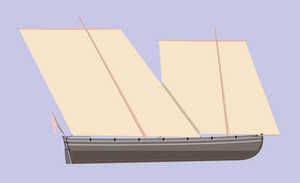
© José Lopez
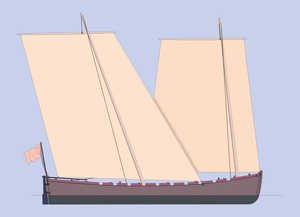
© José Lopez
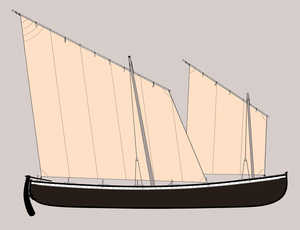
© José Lopez
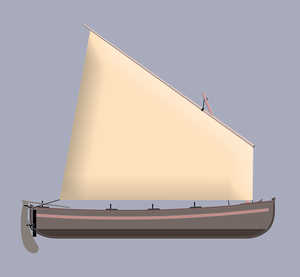
© José Lopez
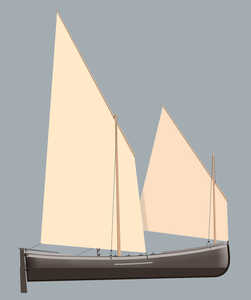
© José Lopez

Arditurri, a late nineteenth century potina, sailing past Haizabia
in Hendaye. The Basque vessels had a shallow underwater
hull with a small anti-drift plane for rowing, and were not well
suited to tacking against the wind. To some extent they compensated
for this shortfall by having a well-calculated rig, with the centre
of wind pressure relatively low and moved aft. © José Lopez















